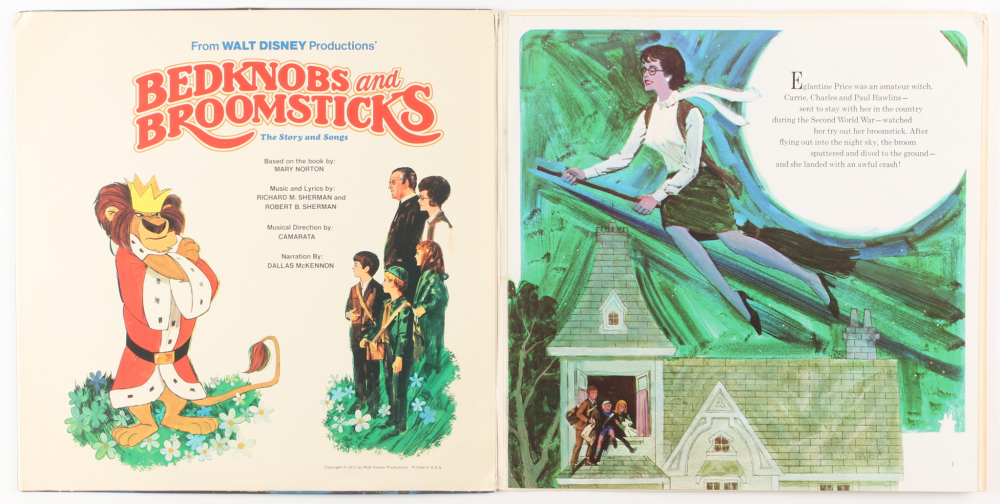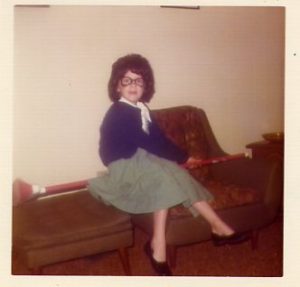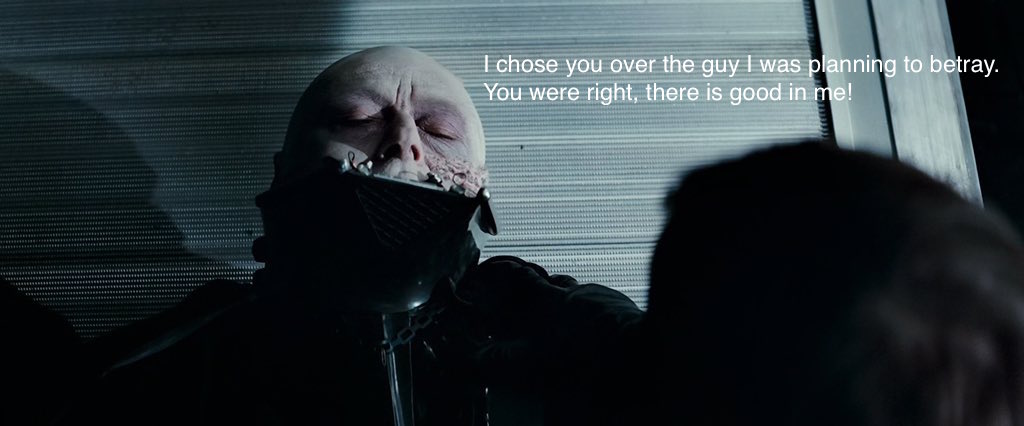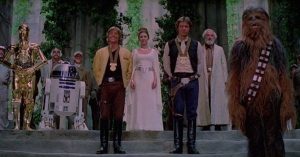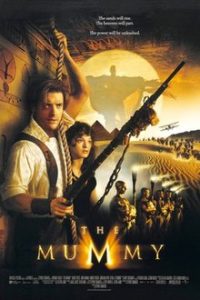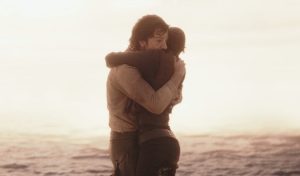In my previous post, I discussed the definition of a Mary Sue character — an author’s self-insert character who’s too good to be true and with whom the author identifies too closely to be able to write her objectively. Now, for the question about Rey from the Star Wars sequel trilogy. Is she a Mary Sue? I’m not so much addressing this out of any desire to defend Rey but to demonstrate how this term is misused and how the misuse often comes down to sexism.
My verdict is that she’s no more a Mary Sue than Luke was in the original trilogy and less than Anakin was in the prequels. I will explain.
To start with, Rey is to a large extent Luke in drag, since her first movie is largely a remake of Luke’s first movie. They’re both orphans with mysterious pasts and Force and piloting talents living on desert planets who get involved in a resistance/rebel movement when they come across a droid carrying critical information. They both end up having to come to terms with their shadowy heritage and save the day by turning the big bad’s key henchman. If Rey is a Mary Sue, then Luke has to be a Gary Stu. Or maybe they’re both just heroes.
One criticism I’ve seen is that Rey is good at everything. She’s an expert mechanic, expert pilot, a quick study in the Force, and instant lightsaber champion. I have to challenge this assertion because it doesn’t fit what we see. She is a good mechanic, but adequate explanation is given for this, since it’s essentially her job even before the story starts. She makes a living by scavenging equipment and fixing it up to sell. She knows the parts that make up a spaceship and what they do. She also lives near a shipyard, and she’s clearly familiar with the ships parked there. Not that she even does anything all that spectacular. She repairs BB-8’s antenna by removing it, straightening it, and putting it back. I could do that much. Then she fixes things on the Falcon, but she’s clearly familiar with the ship and the modifications done to it. It’s not as though she builds a sophisticated droid from spare parts as a child.
She’s also not presented as an expert pilot. She can fly to get to a destination, and she seems to have some familiarity with a variety of craft, but she really has only one big flying sequence in the whole trilogy, when she evades the TIE fighters in the Falcon, and she’s not that great a pilot there. She bumps into things and is wobbly. She nearly crashes immediately upon takeoff. She survives and escapes because she’s more familiar with the local terrain than the other pilots are, not because she’s such a brilliant pilot. It’s not as though she wins a space battle the first time she gets in an X-wing or wins a space battle the first time she gets in a spaceship and accidentally pushes buttons.
She does learn to do Force stuff quickly, though I have to question the assertion by one of the commenters that people are usually only able to use the Force after extensive training. There’s plenty of evidence throughout the saga of people with strong native Force abilities using it instinctively. That was the whole point of them discovering Anakin. He was using the Force without knowing that’s what he was doing. In Rey’s case, she got slammed by the Force when she picked up Luke’s lightsaber, which gave her other people’s memories using the Force, and she had voices of past Jedi in her head. Then Kylo Ren opened the channel to her, so to speak. All she really did was push into his head through the channel he’d opened. When she tried the Jedi mind trick on Stormtrooper 007 (it was an uncredited cameo by Daniel Craig), she failed entirely the first time, and it took multiple tries for her to get it to work. That and shoving Kylo Ren out of her head was the only big Force stuff she did. I don’t see that as any bigger than Luke using the Force to guide the torpedoes after one Force 101 lesson so that he made the impossible shot the more experienced pilots had failed at.
As for the fighting, they established early in the first movie that she knew how to fight with a staff. She’s been on her own since childhood in a rough place, and she’s learned how to take care of herself. When she fights with the lightsaber, she’s using more or less the same techniques she uses with the staff. She’s not doing any kind of elegant fencing. She’s staff fighting using different technology. She’s also fighting someone who’s been badly injured and is dripping blood on the ground who has been ordered to catch her alive, so he’s not fighting to kill, while she’s going all-in. Kylo Ren is much bigger and stronger than she is, but I wouldn’t say he’s a great lightsaber fighter, either. He’s all hacking and slashing, working with force rather than skill). I don’t think either of them would be able to hold up against someone like Obi-Wan or Anakin, for instance. So, someone who has skills in fighting transferring that to a different weapon and holding out long enough for the planet breaking up to allow her to escape doesn’t seem like a Mary Sue stretch to me.
Another criticism of the commenters who call her a Mary Sue is that she has no flaws and is therefore boring, but she’s got a bigger flaw than Luke right from the start. Luke at least wants to do bigger and better things. He has ambitions. Rey is in a rut and doesn’t want to leave. She knows she’s in a place where she’ll never fulfill her potential, but she’s holding out for her family to return and refuses to leave the terrible place where she’s stuck. Even when offered the opportunity at something better and getting a new family in the bargain when Han and Chewbacca offer her a job, she just wants to get back to the place where she was stuck. She actually runs away from the very idea of the Force, which is what gets her captured. If we compare to Luke in his first movie, I’m not sure what his flaw was supposed to be. Really, he was just lacking information. His flaw he had to overcome was not knowing how awesome he really was. Luke got the flaw of being impatient in his second movie, and he was shown as being in danger of being tempted by the Dark Side, but he never actually appeared to be tempted. He resisted Vader and then was willing to die rather than give in to the Emperor. Rey went straight to the Dark Side in her first Jedi lesson and sought out the Dark Side cave. She kept connecting with Kylo Ren even after being warned it was dangerous, and she was on the verge of giving in to the Emperor when Ben showed up at the end of the trilogy. Luke didn’t get any meaningful flaws until the sequel trilogy, and that really made a lot of fans angry. Anakin had plenty of flaws, but weirdly they weren’t treated like problems. Padme fell in love with him after she heard him talking about wanting to be a dictator and learned that he slaughtered all the sandpeople, including the children. He was never treated like a hotheaded, arrogant borderline psychopath but rather was this great guy everyone loved.
But the biggest “not a Mary Sue” clue to me is that Rey isn’t really the hero until the third movie. Luke saved the day in his first movie by blowing up the Death Star. Anakin won the podrace that allowed the Jedi to get away from Tatooine and played a decisive role in the final battle. Rey didn’t really play a key role in her first movie. You could have removed her from the movie entirely after Kylo Ren captured her without changing events too much, aside from her being the reason Finn wanted to lead the mission to the base. The only thing she contributed to blowing up the base was hotwiring a door open so Han and Chewie could plant the explosives. In the second movie, her contribution was persuading Luke to get involved and providing the getaway vehicle. She doesn’t get to be the hero until the last movie. Even though Anakin’s trilogy was a tragic, downward arc, he still got to be the hero and save the day up until the point when he turned evil. I find it hard to take seriously a claim that a character who doesn’t get to be the hero is a Mary Sue.
Incidentally, people have argued with me about Anakin being a Gary Stu since he turned evil and didn’t get to be a Jedi master, but come on, the guy was immaculately conceived by the Force, built his own protocol droid at 10, built his own podracer and was not only the only human to be able to race but also won against more experienced racers, won a space battle accidentally the first time he got in a fighter, was the most powerful Jedi, the queen fell in love with him in spite of him having gone on a murder spree. The not being a master was pure Victim Sue. There was some serious “no one appreciates my genius” energy to that part of the story, which makes it even more obvious that Lucas was overidentifying with this character.
Where I think some fans were seeing Rey as a Mary Sue might have been going back to the original definition. When more Star Wars movies were finally made, these fans wanted to see more movies about Luke, Han, and Leia, not movies about this new character. A lot of people wanted to see movies based on the books that are now considered the “Legends” continuity. I would have loved to see the original Timothy Zahn trilogy made into films. Mara Jade is one of my favorite Star Wars universe characters. But that was never going to happen. The actors were already getting too old for the roles at the ages they were supposed to be in those stories at the time the books were published. By the time they were making the sequels, it just couldn’t have worked, and I don’t think the deepfake technology they use for young Luke in The Mandalorian and The Book of Boba Fett would hold up for him being a main character in an entire movie on the big screen. So, I suspect some fans would have been unhappy no matter who the new main character was because this wasn’t the person they wanted to see. Her being a woman only made it worse.
You don’t have to like the character, but at least be honest in your criticism. Crying “Mary Sue” is a copout. As far as I can see, she’s just a hero, no different from the other heroes in the other Star Wars films. If you didn’t have a problem with a farmboy who won a big space battle the first time he got in an X-Wing and the first time he really had to use the Force, you don’t have a lot of ground to complain about Rey. I happen to love the character, and I’m in good company. John Williams has said she’s his favorite, and when they asked him to score episode 9, he said his first question was whether Rey was in it. I wonder if this means they’ll lure him out of Star Wars retirement to do the Rey movie (though he’ll be about 95 by then, so I hope he’s still with us, even if only just to get to watch the movie).

